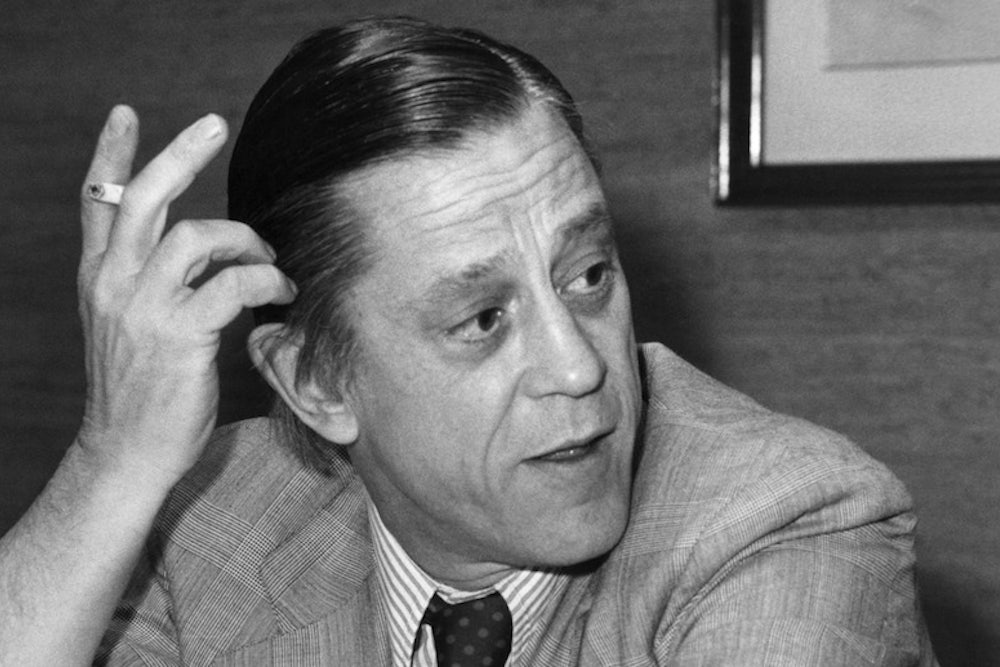I met Ben Bradlee in the fall of 2009, when I was researching The Georgetown Set, my forthcoming book on the influential pundits, publishers, and spies who lived in that leafy, affluent enclave of Washington, D.C. during the Cold War. Bradlee was a friend and neighbor of the people I was writing aboutJoe and Stewart Alsop, Phil and Kay Graham, Frank and Polly Wisnerand, by pedigree, occupation, and social standing (not to mention geography) a member of “the set” as well.
When I told Ben that I hoped my book might finally shed light upon the secret cooperation that went on between reporters and the CIA, he smiled broadly and said: “Good luck.” I knew it was a sensitive subject, since a 1979 biography of Katharine GrahamKatharine the Great: Katharine Graham and The Washington Postby a Washington-based journalist, Deborah Davis, had alleged that Bradlee willingly engaged in a CIA propaganda campaign while serving as a press attaché at the American embassy in Paris during the early 1950s.
“Jesus, that really pissed me off. It made my life very hard,” Ben told me. Bradlee categorically denied that he had ever done the CIA’s bidding, although he admitted that he knew the agency’s people in Paris, and later in Washington: “This is such a small town that after you’re a reporter [for] the Washington Post and you’re lucky enough to know the Grahams and a few other people, you know a lot about the CIA.”
After Bradlee sent Davis a letter vaguely hinting at legal action, Katharine Grahamwho was the real target of the bookreportedly urged Ben to pass the letter along to Davis’ publisher, Kay’s friend, Billy Jovanovich. Jovanovich not only subsequently ordered the title pulled from bookstores and pulped, butby one accountrequired his employees to submit notarized statements confirming that the books had been destroyed. (Davis eventually received a $100,000 breach-of-contract settlement from Jovanovich, and later published the book in an expanded edition through a boutique press.)
A 2012 semi-authorized biography of Bradlee by a former Post employee, Jeff Himmelman, quotes a declassified 1971 CIA memorandum, obtained through the Freedom of Information Act, that supposedly summarizes Ben’s years in Paris: “A reliable source described Bradlee as an unscrupulous, ambitious individual who has no sense of security and little sense of discretion. He is in constant personal and financial difficulties, drinks heavily, talks too much and is emotionally unstable.” Plainly, if Ben was a spy, he was not a very good one.
In 2012, I got in touch with Ben again, writing him a letter asking if he had been among those at the Post who, in 1970, had received photographs of a naked Joe Alsop in the embrace of a KGB agent who had been assigned the task of seducing Alsop during the latter’s reporting trip to Moscow years earlier, in the winter of 1957.
Alsop, a hawkish WASPy newspaper columnist, was persuaded by two of his Georgetown friendsChip Bohlen, the U.S. ambassador to Moscow, and Frank Wisner, the head of covert operations at the CIAto write a detailed account of the Moscow incident and send it to the FBI soon after the photos surfaced in the 1950s. The hope was that this would draw the sting from the Soviet blackmail threat. The Bureau and the CIA stamped what they called “Alsop’s confession” “Top SecretEyes Only,” and only recently declassified it. (My book will be the first to contain the real story of Joe’s ensnarement in the KGB’s so-called “honey trap.”)
In 1970, however, the photos of Alsop and the KGB agent were sent from Hoboken, New Jersey to some of Joe’s enemies andcuriouslysome of his friends. An accompanying letter, unsigned, had claimed that the pictures were taken by Israel’s intelligence service, the Mossad, and had been used to persuade Alsop to write columns favorable to Israel. But who had sent the photosand who had received themremained something of a mystery. I did know, however, that at least one of the recipients was an editor at the Post who worked with Bradlee, by then the paper’s executive editor.
Earlier, when we first spoke in 2009, Ben had told me several anecdotes about Alsop, whom he had accompanied on a very unscientific polling exercise during the 1956 presidential campaign. Bradlee remembered Alsopwhom he described as “a fop,” but “a very bright one”as wearing a green tweed jacket, tailored grey slacks, and hand-sewn English Peal shoes when he went in search of prospective voters among Minnesota farmers. Having found one, he would nudge the man with his walking stick and inquire, “So, what do you make of it, old boy, eh?”
Alsop, Ben recalled, was always notoriously pessimistic about relations with the Russians and how the Cold War would end. Joe was forever predicting that the latest diplomatic crisis would culminate in a nuclear war. “Roots. We’ll all be eating roots in a few years,” he told Bradlee.
I never received an answer to my letter asking Bradlee if he had received the Alsop photos, and I learned shortly afterward that Ben was in poor health. While I don’t know that Bradlee was the one who made the decision to keep the photos quiet, Joe Alsop’s sexual indiscretion in Moscow would remain a secret at the Post until 1995, six years after Joe’s death.
Despite Bradlee’s notoriously gruff exterior, he could be surprisingly sentimentala trait that he appeared to be embarrassed by, and consequently downplayed as much as his Boston Brahmin roots. But when Joe Alsop’s brother, Stewart, was stricken with leukemia in 1974, Ben sent Stew a note, offering to send the afflicted some of his own blood: “Not that I want this bruited about, but I have a little extra, and it is blue.”
